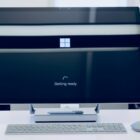Desktop virtualization in essence is the technology separating the user desktop and the software applications, which would normally run on the physical endpoint device of the client. Today, desktops can be fully virtualized, allowing more flexible and secure deployment of applications, but also more centralized management of the desktop environment in a single location.
What is the most well-known advantage of desktop virtualization?
There are more than a few advantages of desktop virtualization recognized by business clients and their end users. One of the primary benefits of having all desktop components saved in a central data center location is the additional security achieved with this virtualization technology. Instead of risking losing critical data in individual hardware devices if they get lost or stolen, clients can rely on comprehensive disaster recovery of their information since all data is essentially stored in a secure data center and it gets backed up by IT teams on an hourly basis . Thus, desktop virtualization has become the golden standard for keeping company data safe and never taking the risk of losing your important information.
What is remote desktop virtualization?
Remote desktop virtualization is practically the execution of desktop applications that occurs in an operating system located remotely from the client devices. This happens over a network that uses pre-defined display protocols to interact with the user applications on the front end. This way, the remote system keeps the application separate from the client device, be it a laptop, a PC, a thin client device, or even a portable smart device. Upon user access, all desktop applications are displayed as if they are running locally, but instead, they remain on a remote operating system that communicates with the client devices via network connectivity.
What is layering in desktop virtualization?
Desktop layering or just layering is a term in desktop virtualization technologies that explains how client data is safely stored on cloud servers or local virtual machines . The idea behind layering is that one or more users can be using the same operating system, which gets backed up by the method of disk imaging and stored in a central server location. Desktop-as-a-Service (DaaS) and Virtual Desktop Infrastructure (VDI) work on the principle of desktop layering, as different images are divided into parts based on the number of desktop environments and users sharing the same desktop layer.
How do virtual desktops work?
Depending on the type of virtual machine and how it is being hosted (on cloud servers or on-premises), the desktop virtualization technology differs. In both instances, data and applications are run on virtual machines, and users can access their desktops remotely from the server locations. Nowadays, thanks to cloud computing technologies like DaaS, multiple users can share a single operating system that runs on more than one virtual desktops.
Desktop-as-a-Service (DaaS)
There are different types of remote desktop virtualization depending on the technology used to process and store client data. DaaS works by the advanced methods of cloud computing and it often gets referenced as a cloud-hosted or cloud-based virtual desktop technology.
One of the great benefits of DaaS is that the client has zero concerns with regards to provisioning the desktops and maintaining the virtualization infrastructure themselves. Managed desktop service providers like we-IT are typically responsible for the entire hosting, servicing, licensing of software applications, and keeping the client data safe at all times. Thanks to cloud computing technologies like DaaS, clients can receive better automation and multi-tenancy than it was previously imaginable. Desktop-as-a-Service is also well-known for its cost-effectivenessin reducing big capital expenses by turning them into small recurring operational fees to the service provider. This way clients can be fully flexible with their desktop virtualization approach, without having to make long-term commitments and impossible investments into expensive virtualization technology.
To find out more about how DaaS works in real user scenarios, contact our team and we will come back to you with more practical tips and useful information with regards to your business.






